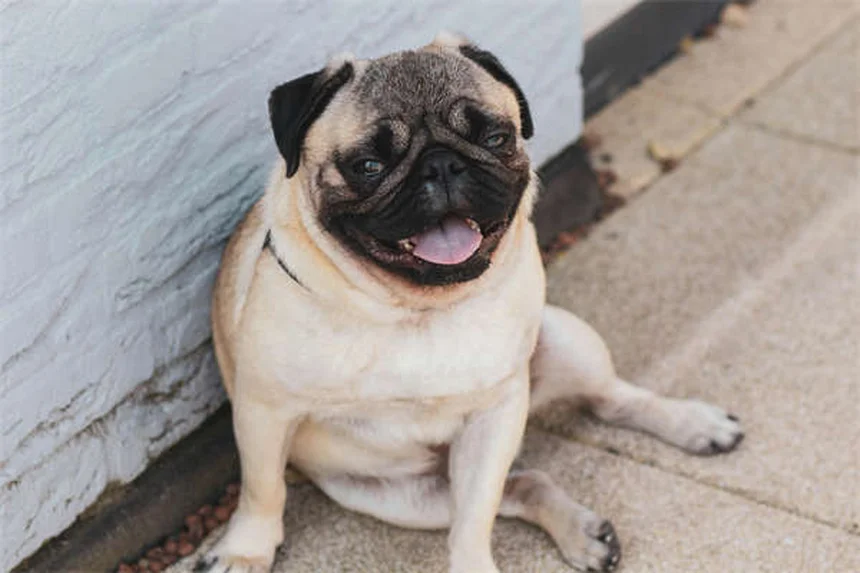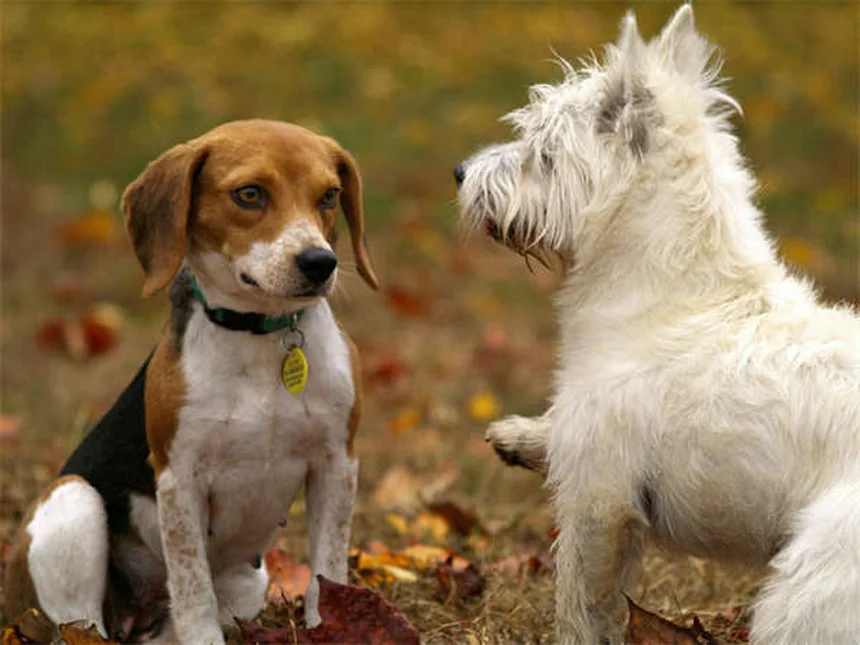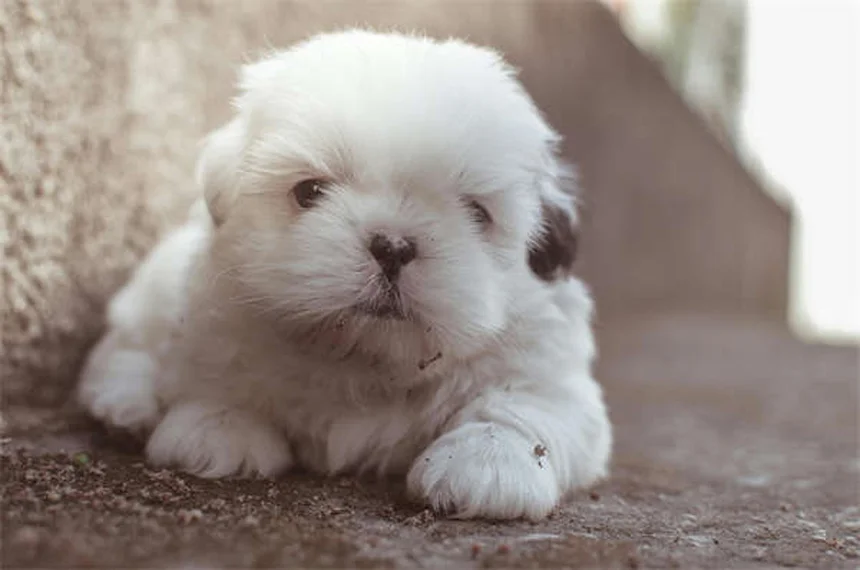Advertisement
How do cats communicate with each other? The answer is: through a complex mix of body language, vocalizations, scent marking, and physical contact! As a cat owner myself, I've spent years decoding these furry conversations, and let me tell you - it's way more interesting than human small talk.You've probably seen your cats talking without making a sound - that tail flick, ear twitch, or slow blink is all part of their secret language. Unlike us, cats rely heavily on non-verbal communication, using every part of their body to express emotions and intentions. From friendly nose boops to warning hisses, each signal has a specific meaning in cat world.In this article, we'll break down exactly how your feline friends speak to each other. Whether you're dealing with a multi-cat household or just curious about your solo kitty's behaviors, understanding these communication methods will give you amazing insight into your pet's mind. Let's dive in!
E.g. :Best Dog Ramps for Senior Dogs: Safe Solutions for Aging Pups
- 1、The Secret Language of Cats: How Furry Friends "Talk"
- 2、The Body Language Dictionary
- 3、Cat Chat: More Than Just Meows
- 4、The Power of Touch
- 5、The Secret World of Scents
- 6、Putting It All Together
- 7、The Science Behind Those Adorable Cat Behaviors
- 8、How Cats Communicate With Other Animals
- 9、Cultural Differences in Cat Communication
- 10、Technology and Cat Communication
- 11、Fun Ways to Bond Through Communication
- 12、FAQs
The Secret Language of Cats: How Furry Friends "Talk"
Ever watched your cats interact and wondered what all that tail flicking and ear twitching means? Cat communication is way more complex than you might think! Let me break down the fascinating ways our feline friends express themselves.
Why Understanding Cat Talk Matters
You know that moment when one cat suddenly hisses and you're left scratching your head? Decoding cat signals helps prevent fights and creates a happier home. Plus, it's just plain cool to understand what's going on in those furry little heads!
Did you know cats have developed special meows just for humans? That's right - in the wild, adult cats rarely meow at each other. They've basically created a human-cat dictionary just for us!
The Body Language Dictionary
Reading the Feline Posture
Imagine walking into a room where one cat's sprawled belly-up while another's crouched like a statue. These positions scream different messages:
| Posture | Meaning | What to Do |
|---|---|---|
| Belly exposed | "I'm totally relaxed here" | All good - no action needed |
| Crouched low | "I'm scared or defensive" | Give space, remove stressors |
| Arched back | "Back off or else!" | Separate cats immediately |
Here's a pro tip: When you see that Halloween cat pose with arched back and puffed fur? That's called piloerection, and it means serious business. Time to play referee!
 Photos provided by pixabay
Photos provided by pixabay
Tails: The Mood Meter
Why do cats wag their tails? Actually, that's the wrong question! The better question is: How does tail position reveal a cat's emotions?
Let me explain - a tail straight up like a flagpole means "Hey buddy, I come in peace!" while a twitchy tail signals "I'm getting annoyed here." Watch for these common tail talks:
- Upright with curl: Super friendly greeting
- Low and tucked: Fear or submission
- Puffed up: Feeling threatened
- Gentle swish: Focused on prey (or that toy mouse)
Cat Chat: More Than Just Meows
The Surprising Truth About Cat Meows
Here's something that might blow your mind - adult cats rarely meow at each other in the wild! Those adorable meows? They're basically a human-directed language. Cats figured out we respond to baby-like sounds, so they developed this special vocabulary just for us.
But between cats? They've got a whole different sound system:
- Purrs: Not just for happiness - also a "please don't hurt me" signal
- Trills: The feline equivalent of "Hey there, friend!"
- Chattering: That weird teeth-chattering at birds? It's hunting talk
When Sounds Get Serious
Ever heard two cats yowling at 3 AM? That's the feline version of a shouting match. These loud vocalizations carry far to mark territory or attract mates. And hissing? That's basically a cat saying "Back off before things get ugly!"
Here's a funny story - my cat once growled at his own reflection for 10 minutes straight. Turns out he didn't recognize himself! This shows how vocalizations are often last-resort warnings before actual fights break out.
The Power of Touch
 Photos provided by pixabay
Photos provided by pixabay
Tails: The Mood Meter
Why do cats rub against each other? It's not just about being cute - they're actually swapping scent profiles! Those cheek rubs deposit pheromones that say "You're part of my crew."
Other touch communications include:
- Nose boops: The cat handshake
- Allogrooming: Fancy term for mutual grooming
- Kneading: Leftover kitten behavior showing comfort
When Touch Means Trouble
Not all physical contact is friendly. Ever seen one cat block another from the food bowl? That subtle body positioning is intentional communication. Or that intense stare-down before a chase? That's cat for "I dare you to move!"
Here's what I've learned from my three cats: Playful chasing is fine until someone's tail puffs up. That's your cue to distract them with toys before things escalate!
The Secret World of Scents
Invisible Messages Everywhere
Did you know your cat's face contains scent factories? Those cheek glands leave chemical messages on everything they rub. It's like posting sticky notes saying "I was here!"
Other sneaky scent signals include:
- Scratching: Leaves both visual marks and scent
- Spraying: The feline version of a "No Trespassing" sign
- Bunting: Head rubbing that marks safe spaces
 Photos provided by pixabay
Photos provided by pixabay
Tails: The Mood Meter
Why would a cat poop outside the box? Sometimes it's medical, but often it's middening - leaving "messages" in prominent places. Outdoor cats do this to mark territory boundaries.
In multi-cat homes, this can signal stress. I learned this the hard way when my new cat started leaving "presents" on the rug. Adding more litter boxes in quiet areas solved our stinky situation!
Putting It All Together
Reading the Whole Picture
Here's the thing - cats rarely use just one signal at a time. That flicking tail with flattened ears? Much different than a flicking tail with perked ears! Context is everything in feline communication.
Try this exercise: Next time your cats interact, watch for combinations of:
- Body posture + ear position
- Vocalizations + tail movement
- Physical contact + facial expressions
Creating a Cat-Friendly Home
After years of feline observations, here's my best advice: Give each cat their own resources (food bowls, beds, litter boxes) and plenty of vertical space. Cats feel safer when they can communicate without feeling trapped.
Remember that slow blink I mentioned earlier? Try it with your cat! Many will blink back, creating a special bond. It's like saying "I love you" in cat language.
So the next time you see your cats interacting, take a moment to appreciate their complex communication. Who knew so much conversation could happen without a single word?
The Science Behind Those Adorable Cat Behaviors
Why Do Cats Knead Like Little Bakers?
Ever noticed your cat pushing their paws in and out against soft surfaces? This behavior, called kneading, actually dates back to kittenhood. When nursing, kittens knead their mother's belly to stimulate milk flow. But why do adult cats keep doing it?
Scientists believe kneading serves multiple purposes for grown cats. It's a comforting behavior that releases feel-good endorphins, like how humans might twirl their hair when relaxed. Some experts think it's also a way to mark territory - those paw pads contain scent glands that leave behind the cat's personal signature. My tabby cat Mr. Whiskers kneads every blanket in the house, and I swear he's trying to claim them all!
The Mysterious Slow Blink
Have you ever locked eyes with your cat and they slowly closed their eyes at you? That's not sleepiness - it's actually called a "cat kiss" and it's one of the highest compliments a feline can give!
In the wild, direct eye contact can be seen as threatening. When cats slowly blink at each other (or at you), they're communicating trust and affection. Try this experiment: Next time your cat looks at you, slowly close your eyes for a few seconds and then reopen them. About 70% of cats will return the gesture! It's like having your own secret love language with your pet.
How Cats Communicate With Other Animals
Cat-Dog Conversations
You might think cats and dogs speak completely different languages, but they actually find ways to communicate across species! The key is understanding how their signals differ.
For example, when a dog wags its tail, it usually means happiness. But when a cat does the same tail movement? That's often irritation. I've seen this misunderstanding play out in my own home - my golden retriever wags excitedly at the cat, who interprets it as aggression and hisses back. Over time though, many cats and dogs learn to "translate" each other's body language. My pets now have their own unique way of playing together without confusion!
Birds and Cats: The Ultimate Miscommunication
Ever noticed your indoor cat making weird chattering sounds at birds outside the window? That rapid "ek-ek-ek" noise is actually a fascinating example of feline frustration!
Researchers believe this behavior stems from hunting instincts. The chattering mimics the killing bite cats would use on prey, combined with excitement at seeing potential food they can't reach. Some scientists think it might also be an attempt to lure birds closer by imitating bird sounds. Whatever the reason, it's clear cats have developed specialized communication just for their feathery "friends"!
Cultural Differences in Cat Communication
Do Cats Have Accents?
Here's something wild - cats in different parts of the world actually develop regional "accents" in their meows! A study in Sweden found that cats tend to mimic the speech patterns of their human families.
For example, cats in Japan often have higher-pitched meows to match the tonal qualities of Japanese speech. Meanwhile, American cats tend to have more varied vocalizations. My cousin's cat in Boston even developed a distinctive "maaa-ow" that sounds oddly similar to the local accent! This shows just how adaptable feline communication can be.
Historical Cat Communication
Did you know ancient Egyptians believed cats could communicate with the spirit world? They weren't entirely wrong - we now understand that cats have developed sophisticated ways to "talk" that go far beyond what our ancestors realized.
Hieroglyphics show that Egyptians observed many cat behaviors we recognize today - the slow blink, tail positions, even scent marking. They just interpreted them as mystical signs rather than practical communication. Makes you wonder what other feline secrets we might still uncover!
Technology and Cat Communication
Can We Really Talk to Cats With Apps?
You've probably seen those "cat translator" apps that claim to interpret meows. Do they actually work? The answer is... kind of!
While no app can perfectly translate complex cat communication, some use AI to analyze vocal patterns and body language cues together. The best ones can distinguish between a hungry meow and a pain meow with about 75% accuracy. I tried one with my cat, and while it wasn't perfect, it did help me notice subtle differences in her "I want food" versus "I want attention" vocalizations!
The Future of Human-Cat Communication
Scientists are making incredible advances in understanding feline communication. Some researchers are developing special collars that can interpret a cat's purrs to detect early signs of illness.
Other teams are working on AI systems that can read a cat's entire body language in real time - ear position, tail movement, pupil dilation and more - to give a complete "translation." Imagine getting a notification that says "Fluffy is feeling anxious" before any obvious signs appear! While we're not quite there yet, the future looks bright for bridging the human-feline communication gap.
Fun Ways to Bond Through Communication
Teaching Your Cat to "Talk" Back
Did you know you can actually train your cat to communicate specific needs? It's easier than you think! Start by consistently using the same word when your cat does something, like saying "hungry" every time they meow at their food bowl.
Over time, many cats will learn to use that specific meow when they want food. I've trained my cat to give a special chirp when she wants to play, and a different sound when she wants cuddles. It's not quite having a conversation, but it definitely cuts down on the guesswork!
Creating a Communication-Rich Environment
Cats thrive in homes that allow for natural communication behaviors. Here are some easy ways to make your space more cat-friendly:
- Install window perches for bird-watching (and chattering!)
- Provide scratching posts in multiple materials
- Create vertical spaces with cat trees
- Use pheromone diffusers to reduce stress signals
- Set up multiple feeding stations to prevent food guarding
Remember, every cat is unique in how they communicate. My neighbor's cat loves "talking" with those electronic buttons, while mine just stares at them like they're alien technology. The key is paying attention to what works for your particular feline friend!
E.g. :Cat communication - Wikipedia
FAQs
Q: Do cats meow at each other?
A: Here's something that might surprise you - adult cats rarely meow at each other in the wild! Those adorable meows you hear are actually a special language they developed just for humans. Cats figured out we respond to baby-like sounds, so they created this vocabulary to communicate with us. Between cats, they use other vocalizations like trills, chirps, hisses, and growls. The only time you might hear cats meowing at each other is during friendly interactions in domestic settings, but it's not their primary way of communicating.
Q: Why do cats rub against each other?
A: When cats rub against each other (or against you!), they're doing something called bunting. This behavior serves multiple purposes in cat communication. First, they're exchanging scents through glands located on their cheeks, chin, and forehead. This scent mixing creates a "group smell" that helps identify family members. Second, it's a sign of affection and trust - like a feline hug! In multi-cat households, you'll often see this behavior between cats that get along well. It's their way of saying "You're part of my crew."
Q: What does it mean when cats stare at each other?
A: Cat stares can mean very different things depending on the context. A soft gaze with slow blinks is the feline equivalent of blowing kisses - it shows trust and affection. But a hard, unblinking stare is often a challenge or threat in cat language. You'll see this intense stare-down before potential fights, usually with dilated pupils and tense body posture. If you notice your cats locked in a staring contest with flattened ears or twitching tails, it's best to distract them with a toy or noise to prevent escalation.
Q: Why do cats wag their tails when lying down?
A: That gentle tail flick while your cat is resting actually says a lot about their mood! Unlike dogs, cats don't wag their tails when happy. A swishing tail usually indicates mild irritation or contemplation - maybe they're annoyed by a noise or deciding whether to get up. If the tail is thumping loudly, the irritation level is higher. But if the tail is still except for the very tip moving slightly, your cat is probably just relaxed but alert. It's fascinating how many different messages cats can send with just their tails!
Q: How do cats show affection to each other?
A: Cats have several sweet ways to show they care about their feline friends. Allogrooming (mutual grooming) is a big one - you'll often see cats licking each other's heads and necks. This not only keeps them clean but strengthens social bonds. Other affectionate behaviors include sleeping curled up together, touching noses ("nose boops"), and intertwining tails. Some cats even develop synchronized routines, like eating or playing at the same times. These behaviors are most common between cats that grew up together or have formed close friendships in multi-cat households.












